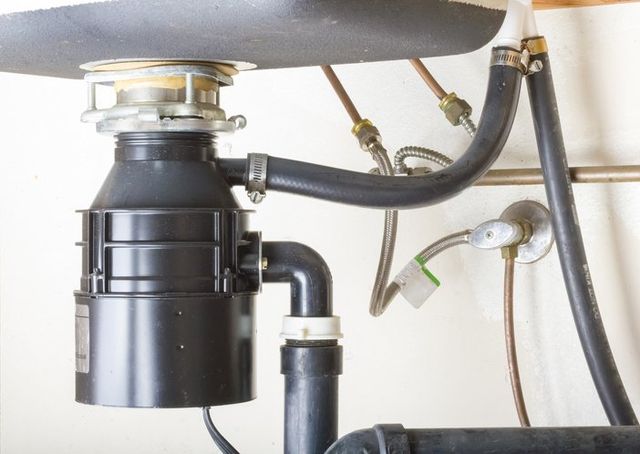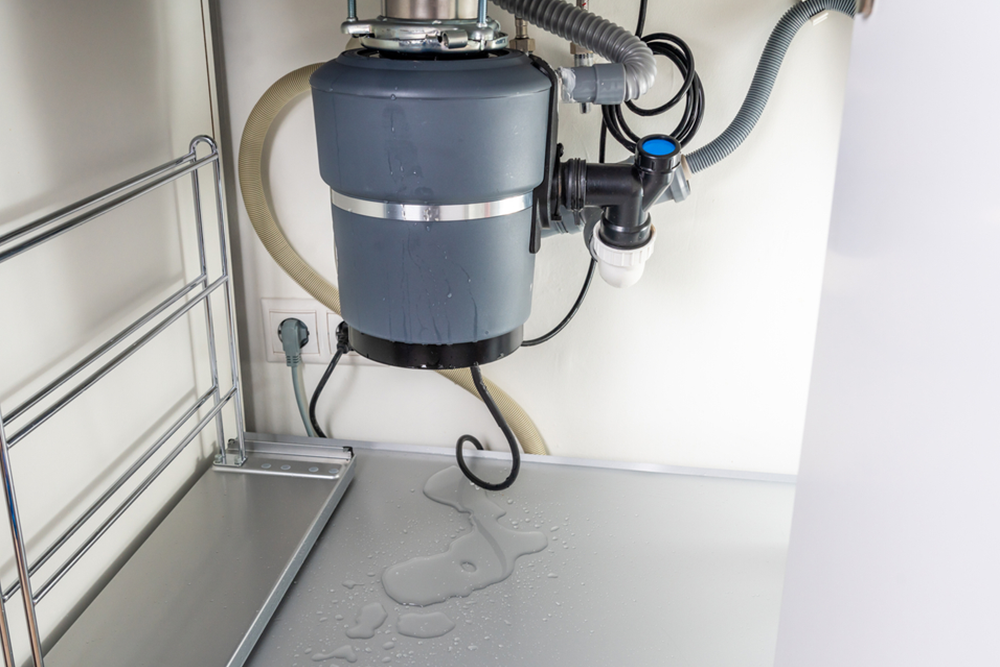Our Guide to Resolving a Leak in Your Garbage Disposal
Our Guide to Resolving a Leak in Your Garbage Disposal
Blog Article
Listed here in the next paragraph you will find more wonderful content when it comes to Garbage Disposal Leaking From Bottom.

Waste disposal unit are vital kitchen devices that aid in taking care of food waste efficiently. Nonetheless, a dripping garbage disposal can be an aggravating and unpleasant problem to take care of. Luckily, lots of leakages can be taken care of conveniently with a few simple steps. In this post, we will certainly review how to repair a leaking waste disposal unit successfully.
Intro
Waste disposal unit are installed under kitchen sinks and are developed to shred food waste into smaller items, permitting it to go through the plumbing system quickly. While these tools are normally reliable, leakages can occur with time due to deterioration, loosened links, or damage to the system.
Step-by-Step Overview to Taking Care Of a Leaking Waste Disposal Unit
Turn Off the Power
Prior to attempting any kind of repair work, ensure that the power to the garbage disposal device is turned off to avoid the danger of electrical shock.
Locate the Leakage
Identify the specific area of the leakage and determine the reason
Tighten Links
Make use of a wrench to tighten up any type of loosened connections between the disposal system and the plumbing system.
Replace Seals or Gaskets
If the leakage is because of used seals or gaskets, remove the old components and change them with new ones.
Patching Fractures or Holes
For fractures or holes in the disposal unit, use epoxy or an ideal patching product to secure the broken area.
Determining the Source of the Leak
Prior to trying to deal with a dripping garbage disposal, it is essential to recognize the resource of the leakage. This can usually be done through visual assessment or by carrying out simple examinations.
Visual Inspection
Evaluate the waste disposal unit system meticulously for any kind of indications of water leak. Pay close attention to locations around seals, gaskets, and link factors.
Testing for Leaks
One method to examine for leaks is by running water through the disposal device and checking for any kind of noticeable indicators of leakage.
Usual Causes of Leakages in Garbage Disposals
Worn Seals and Gaskets
Seals and gaskets play an essential duty in avoiding water from leaking out of the waste disposal unit. With time, these components can weaken, leading to leakages around the disposal system.
Loose Links
The links in between the garbage disposal and the plumbing system can end up being loosened over time, triggering water to leak out throughout procedure.
Splits or Holes in the Disposal Device
Physical damage to the waste disposal unit, such as cracks or openings in the housing, can likewise lead to leakages.
Tools and Materials Needed for Repairing a Dripping Garbage Disposal
Before beginning the repair work process, collect the essential tools and products, consisting of a screwdriver, flexible wrench, plumbing's putty, replacement seals or gaskets, and epoxy or patching material for fixing cracks or holes.
Checking the Garbage Disposal After Repair Work
When the repair service is complete, test the garbage disposal by running water via it to guarantee that the leak has been dealt with.
Preventive Maintenance Tips to Avoid Future Leakages
To stop future leakages, it is vital to execute regular upkeep on your waste disposal unit. This includes keeping it clean, avoiding putting non-food things or tough objects down the disposal, and occasionally checking for leakages or various other problems.
Final thought
In conclusion, repairing a leaking waste disposal unit is a fairly straightforward process that can be completed with basic tools and products. By following the steps described in this short article and exercising preventive maintenance, you can maintain your garbage disposal in good working problem and stay clear of expensive repair work in the future.
HERE’S HOW TO FIX YOUR GARBAGE DISPOSAL
WHAT TO DO IF SOMETHING IS STUCK IN YOUR GARBAGE DISPOSAL
If the impeller won’t turn, there’s probably something stuck in the disposal. It could be a steak bone or peach pit, although plumbers report pulling all sorts of inappropriate objects out of disposals, such as bottle caps or aluminum foil. Make sure power to the disposal is off, and look inside to see if you can see the source of the jam.
Never stick your fingers in a disposal. Pull out anything you see with tongs or pliers.
If the disposal still won’t work, it may be time to call a plumber or consider buying a new disposal. GEM Plumbing & Heating is here for all of your garbage disposal needs.
WHAT TO DO IF YOUR GARBAGE DISPOSAL DRAIN IS CLOGGED
Take everything out from underneath your sink and put a bucket or other container under your disposal to catch any water that drains out. Disconnect your disposal from the power supply. If it’s plugged into a wall outlet, unplug it. If it’s hardwired into an electrical box, go to the electrical panel and turn off the breaker for the disposal. Pour ¼ cup of baking soda into the drain, followed by ½ cup of white vinegar. Give the solution a few minutes to fizz and do its work. Look into the disposal with a flashlight to see if you can see an object that might be causing the clog. If you see it, remove it using tongs or pliers. MORE TIPS ON DEALING WITH A CLOGGED GARBAGE DISPOSAL
Never use drain cleaner in a garbage disposal. It can damage the plastic parts inside the disposal. You can also be splashed with the caustic liquid while working to clear the clog. Beware! Never stick your fingers into a garbage disposal. Trust us — not a good idea. In many instances, your dishwasher drains through your garbage disposal. This allows the disposal to grind any large food particles that may be drained out of your dishwasher. There are some jurisdictions, however, where the plumbing code prohibits such a connection. WHAT TO DO WHEN YOUR DISHWASHER DRAINS THROUGH THE DISPOSAL
Run some water in the sink so your plunger has at least a ½-inch of water to create a seal and plunge vigorously up and down several times. You may need to repeat this several times. Run hot water down the drain to clear any residue that remains.

Do you enjoy reading about Why Is ? Make feedback directly below. We will be glad to find out your insights about this piece. Hoping that you come back again in the near future. Loved our write up? Please share it. Help somebody else discover it. We love reading our article about Garbage Disposal Leaking From Bottom.
Schedule And Pricing Report this page